manual transmission stop leak
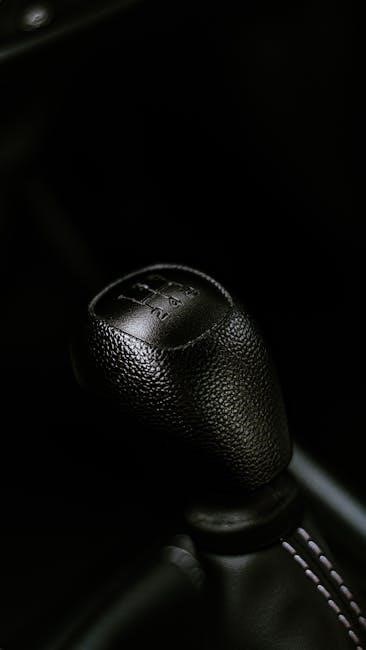
A manual transmission stop leak is a solution to address fluid leaks in manual transmissions, often caused by worn seals or gaskets. These leaks can lead to fluid loss, reducing transmission efficiency and potentially causing damage. Stop leak products, such as additives, are designed to rejuvenate seals and prevent further leakage. Addressing these issues promptly is crucial to avoid costly repairs and maintain optimal vehicle performance. Regular maintenance and early intervention are key to extending the lifespan of your manual transmission.
What is a Manual Transmission Stop Leak?
A manual transmission stop leak is a chemical solution designed to address fluid leaks in manual transmissions. These products, often in the form of additives, are formulated to rejuvenate worn seals and gaskets, preventing further fluid loss. They work by softening and restoring the elasticity of seals, which can become brittle over time due to heat, wear, and tear. Compatible with petroleum-based transmission fluids, stop leak products are a quick fix for minor leaks, offering a cost-effective alternative to disassembling the transmission for repairs. However, they are not a permanent solution for severe damage and should be used cautiously to avoid exacerbating internal components.
Importance of Addressing Transmission Leaks
Addressing transmission leaks is crucial to prevent further damage and maintain optimal vehicle performance. Transmission fluid lubricates gears and synchronizers, and its loss can lead to increased friction, overheating, and premature wear of internal components. Ignoring leaks can result in costly repairs, such as replacing damaged gears or seals. Additionally, fluid leaks can contaminate other vehicle systems and create environmental hazards. Prompt action, whether through stop leak products or professional repairs, ensures the longevity of the transmission and prevents more severe issues from developing. Regular monitoring and timely intervention are essential for maintaining the health and functionality of your manual transmission.
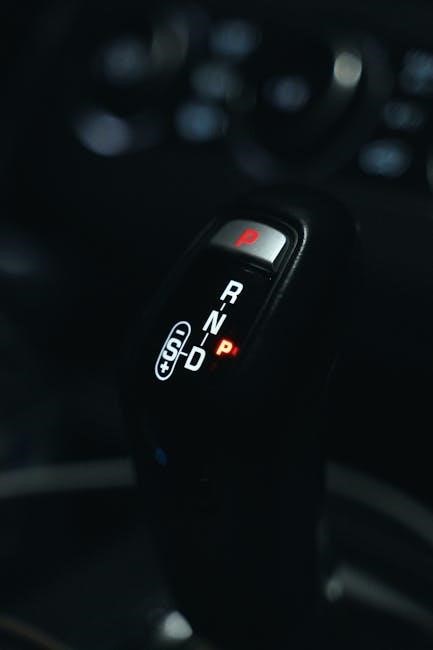
Causes of Manual Transmission Leaks
Manual transmission leaks often result from worn or damaged seals, cracked or loose fittings, overfilled fluid, or aging gaskets. These issues can lead to fluid loss.
Worn or Damaged Seals
Worn or damaged seals are a primary cause of manual transmission leaks. Over time, seals degrade due to wear, heat, and age, allowing fluid to escape. The input and output shaft seals are particularly prone to damage. When these seals wear out, they can no longer maintain the necessary barrier, leading to leaks. Stop leak additives can sometimes rejuvenate these seals, temporarily restoring their integrity. However, in severe cases, seal replacement may be necessary to ensure long-term reliability and prevent further fluid loss.
Cracked or Loose Fittings
Cracked or loose fittings are another common source of manual transmission leaks. Over time, the fittings connecting transmission lines or components can become loose due to vibration or wear. Cracks in these fittings can also develop, allowing fluid to escape. Inspecting and tightening loose fittings can often resolve the issue. However, if cracks are present, the fittings may need to be replaced. Stop leak additives are generally ineffective for this type of leak, as they target seal and gasket issues rather than damaged or loose hardware. Addressing cracked or loose fittings promptly is essential to prevent further fluid loss and potential damage to the transmission.

Overfilled Transmission Fluid
Overfilled transmission fluid can lead to leaks, as excessive pressure forces fluid to escape through seals and gaskets. When fluid levels exceed the recommended capacity, it can cause pressure buildup inside the transmission. This pressure can push fluid through even minor gaps in seals or gaskets, resulting in leaks. Stop leak additives are not a solution for overfilled fluid, as the root cause is the excess fluid itself. Draining the fluid to the correct level is the appropriate fix. Proper fluid levels are essential to prevent such issues and ensure smooth transmission operation. Always consult your vehicle’s manual for guidance on correct fluid levels to avoid this common problem.
Aging Gaskets and Seals
Aging gaskets and seals are common causes of manual transmission leaks. Over time, these components can harden, crack, or lose their elasticity, allowing fluid to escape. Stop leak additives, such as Bars Leaks 1420 or BlueDevil Transmission Sealer, are designed to rejuvenate these worn seals by softening and restoring their flexibility. These products can effectively seal minor leaks caused by age-related deterioration. However, they are not a permanent fix for severely damaged gaskets or seals. Regular inspections and timely replacements are essential to prevent further damage. Addressing aging gaskets and seals early can help maintain transmission health and prevent costly repairs down the line.
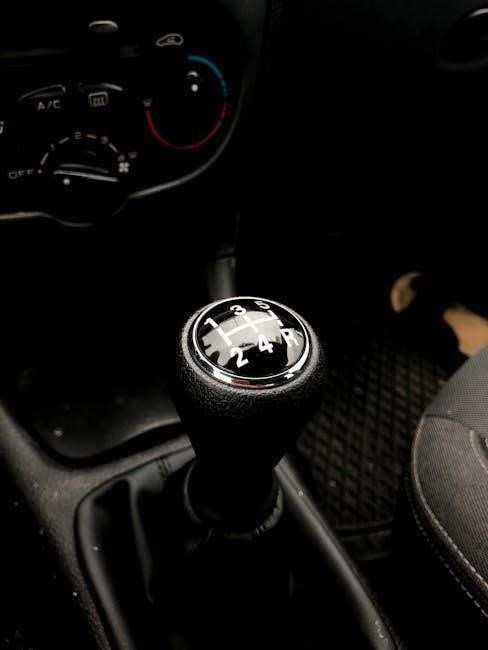
Diagnosing a Manual Transmission Leak
Diagnosing a manual transmission leak involves visual inspection for drips, checking fluid levels, and identifying sources like worn seals or gaskets. Additives can help minor leaks, but severe cases may require professional inspection to avoid further damage.
Visual Inspection
A visual inspection is the first step in diagnosing a manual transmission leak. Start by locating the transmission and checking for visible drips or puddles of fluid. Look for discolored or stained areas on the ground or underneath the vehicle. Inspect the transmission pan, seals, and gaskets for signs of wear or damage. Common leak sources include the input shaft seal, tailshaft seal, and drain plug. Use a flashlight to examine hard-to-reach areas. Clean the transmission surface with a degreaser to spot leaks more easily. This step helps identify the leak’s origin before further diagnostic measures are taken.
Transmission Fluid Level Check
Checking the transmission fluid level is essential to diagnose leaks and ensure proper transmission function. Locate the transmission dipstick, typically labeled under the hood. Pull it out and wipe it clean with a lint-free cloth. Insert it back and pull it out again to get an accurate reading. The fluid level should be between the “MIN” and “MAX” marks. If the level is low, it may indicate a leak. Overfilled systems can also cause leaks, so avoid exceeding the recommended level. This step helps determine if a stop leak product is appropriate or if professional repair is needed. Always refer to your vehicle’s manual for specific instructions.
Identifying Leak Sources
Identifying the source of a manual transmission leak is crucial for effective repair. Common leak sources include the input shaft seal, tailshaft seal, and drain plug. Inspect these areas for signs of fluid leakage, such as drips or stains. The rear main seal, located where the transmission meets the engine, is another frequent culprit. Use a flashlight and rag to wipe away dirt and old fluid for a clearer view. If the leak is from a gasket or seal, it may require replacement. In some cases, stop leak additives can be effective, but severe damage may necessitate professional intervention. Always clean the area before inspection to avoid confusion.

Solutions for Manual Transmission Leaks
Stop leak additives like Bars Leaks 1420 and BlueDevil Transmission Sealer can rejuvenate worn seals. Gasket and seal replacements are effective for persistent leaks. Professional repairs are recommended for severe damage, ensuring long-term reliability and preventing further fluid loss.
Using Stop Leak Additives
Stop leak additives, such as Bars Leaks 1420 and BlueDevil Transmission Sealer, are designed to target worn seals and gaskets in manual transmissions. These products work by softening and rejuvenating the rubber and plastic components, effectively sealing small leaks. They are typically added directly to the transmission fluid and circulate through the system to repair cracks and gaps. While not a permanent fix for severe damage, stop leak additives can extend the life of your transmission and prevent further fluid loss. They are a cost-effective and non-invasive solution for minor leaks, offering a temporary repair until a more permanent fix can be applied.
Gasket and Seal Replacement
Gasket and seal replacement is a reliable solution for addressing manual transmission leaks, especially when damage is severe. Worn-out gaskets and seals, often located at the input shaft or tailshaft, can be replaced with new ones made from durable materials like Viton or nitrile. This process typically requires disassembling the transmission, which can be labor-intensive. While stop leak additives offer a temporary fix, physical replacement ensures a permanent solution. It’s essential to use high-quality replacement parts and follow proper installation procedures to prevent future leaks. This method is more invasive but provides long-term reliability for your manual transmission system.
Professional Repair Options
Professional repair is the most reliable solution for severe manual transmission leaks, ensuring long-term durability. A qualified mechanic will inspect the transmission, identify the source of the leak, and replace damaged components. This may involve rebuilding or replacing the entire transmission if the damage is extensive. Professional repairs often include replacing faulty gaskets, seals, and bearings with high-quality parts. While this option is more expensive, it guarantees proper fixing and prevents future issues. Mechanics use specialized tools and techniques to ensure the transmission operates smoothly. For critical leaks, professional intervention is highly recommended to avoid further damage and maintain optimal performance.
When to Avoid Using Stop Leak Products
Stop leak products should be avoided in cases of severe transmission damage or large leaks, as they may worsen the issue or mask symptoms temporarily.
Severe Damage Cases
In cases of severe damage, such as cracked transmission housings or extensively worn seals, stop leak products are ineffective and may even exacerbate the problem. These products are designed to address minor leaks caused by aged or slightly damaged seals, not to repair major structural issues. Using stop leak additives in severely damaged transmissions can lead to further complications, as the underlying damage remains unaddressed. In such scenarios, professional repair or replacement of the transmission is necessary to ensure long-term functionality and safety. Temporary fixes like stop leak products are not a viable solution for significant mechanical failures.
Potential Risks of Stop Leak Products
While stop leak products can be effective for minor leaks, they carry risks, especially in severe cases. These products can clog transmission filters or damage sensors if used improperly. Additionally, they may not address the root cause of the leak, leading to further damage over time. In some cases, stop leak additives can interact negatively with transmission components, causing premature wear or failure. It’s crucial to use these products cautiously and only for minor leaks. If the transmission has significant damage, such as cracked housings or severely worn seals, stop leak products may worsen the issue, requiring costly repairs. Always consult a professional before use.
Best Manual Transmission Stop Leak Products
Bars Leaks 1420 and BlueDevil Transmission Sealer are top choices for manual transmissions. Both products are compatible with petroleum-based fluids and effectively seal leaks without harming components.
Bars Leaks 1420 Transmission Stop Leak
Bars Leaks 1420 is a highly effective solution for manual transmission leaks, designed to restore worn seals and gaskets. It is compatible with all petroleum-based transmission fluids, including synthetics, making it a versatile option for various vehicles. The product works by softening and rejuvenating seals, thereby stopping leaks without causing harm to other components. It is particularly noted for its ability to address leaks caused by aged or damaged seals, providing a quick and efficient fix. Users have reported positive results, with the product effectively sealing leaks and preventing further fluid loss. It is a popular choice among drivers seeking a reliable DIY solution.
BlueDevil Transmission Sealer
BlueDevil Transmission Sealer is a reliable solution for manual transmission leaks, designed to restore and seal worn-out gaskets and seals. It is formulated to work with transmission fluid, helping to rejuvenate damaged components and prevent further leakage. The product is easy to use, requiring addition to the transmission fluid, where it works to stop leaks effectively. BlueDevil is known for its compatibility with various transmission types and its ability to address leaks without causing harm to other parts. It is a popular choice among drivers seeking a quick and effective fix for transmission leaks, offering a convenient alternative to costly repairs.
Features and Effectiveness
Manual transmission stop leak products like Bars Leaks 1420 and BlueDevil Transmission Sealer are designed to effectively address fluid leaks by rejuvenating worn seals and gaskets. These products are compatible with petroleum-based and synthetic transmission fluids, ensuring versatility for various vehicles. They work by softening and restoring rubber and plastic components, thereby sealing minor cracks and gaps. Non-corrosive and safe for system components, these additives are an excellent alternative to costly repairs. Their effectiveness lies in their ability to stop leaks without causing further damage, making them a practical solution for drivers seeking to extend the lifespan of their manual transmissions.
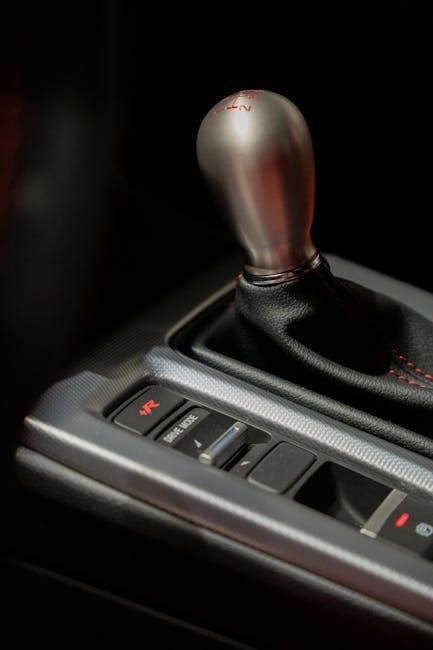
How to Apply Stop Leak Products
Pour the stop leak additive directly into the transmission fluid filler neck, ensuring not to overfill. Monitor the leak to confirm effectiveness after application.
Step-by-Step Application Guide
To apply a manual transmission stop leak product, start by ensuring your vehicle is on level ground. Locate the transmission filler neck and remove the cap. Pour the recommended amount of stop leak additive directly into the filler neck. Avoid overfilling, as this can cause pressure issues. Replace the cap securely. Start the engine and let it run for a few minutes to circulate the additive. Monitor the leak to see if it has stopped. If the leak persists, do not overuse the product. Instead, consider professional repair. Always follow the manufacturer’s instructions for proper application and safety precautions.
Precautions and Safety Measures
When using manual transmission stop leak products, always follow the manufacturer’s instructions to avoid overuse or system damage. Ensure the vehicle is on level ground to prevent fluid imbalance. Wear protective gloves and eyewear to avoid skin or eye irritation. Work in a well-ventilated area to prevent inhaling fumes. Avoid mixing different additives unless specified as compatible. Never exceed the recommended dosage, as this can lead to transmission pressure issues. If the leak persists after treatment, discontinue use and seek professional assistance. Keep the product away from children and pets. Properly dispose of any unused product and materials to protect the environment.
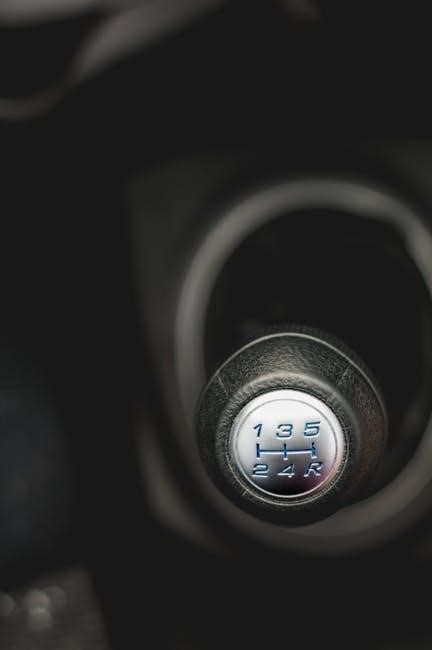
Preventing Future Leaks
- Regularly check transmission fluid levels and condition to ensure optimal performance.
- Inspect seals and gaskets during routine maintenance for signs of wear.
- Use high-quality lubricants and replace worn parts promptly to prevent leaks.
Regular Maintenance Tips
Regular maintenance is essential to prevent future manual transmission leaks. Check transmission fluid levels periodically and top up as needed. Inspect the transmission pan gasket and seals for signs of wear or damage. Replace worn-out gaskets and seals promptly to avoid leaks. Use high-quality transmission fluid compatible with your vehicle to ensure optimal performance. Avoid overfilling, as this can lead to pressure buildup and potential leaks. Schedule regular transmission service to clean and replace filters, ensuring smooth operation. Address any small leaks immediately to prevent them from becoming major issues. Consistent upkeep helps extend the lifespan of your manual transmission.
Transmission Fluid Health Checks
Regular transmission fluid health checks are vital for maintaining a leak-free manual transmission. Inspect the fluid level using the dipstick, ensuring it meets the recommended level. Check the fluid’s color and consistency; clean, amber-colored fluid indicates good health, while dark or gritty fluid suggests contamination. Top up with the correct type of transmission fluid, such as 80w-90, as specified in your vehicle’s manual. Avoid overfilling, as this can lead to pressure buildup and potential leaks. Replace the fluid every 30,000 to 60,000 miles to remove contaminants and refresh the system. Healthy fluid ensures smooth gear operation and helps prevent seal deterioration, reducing the risk of leaks.
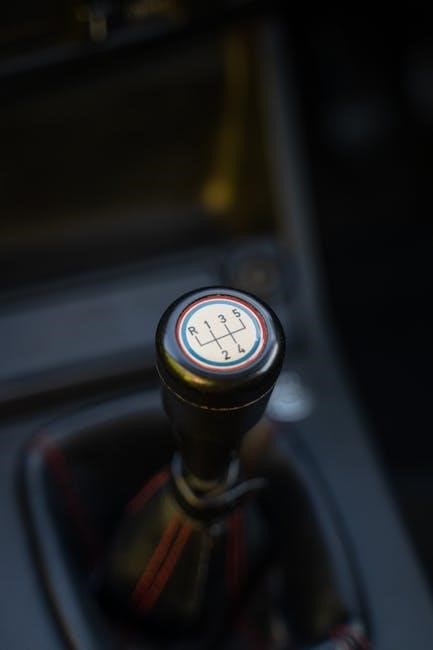
Cost Considerations
Manual transmission stop leak solutions vary in cost, with DIY additives like Bars Leaks priced around $10-$20, while professional repairs can range from $200 to $1,000, depending on severity.
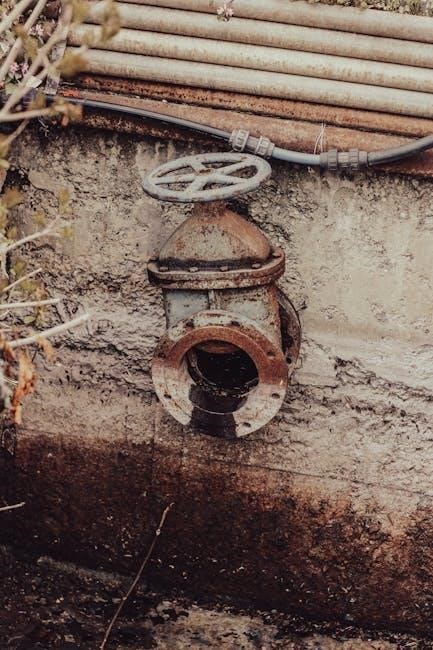
DIY Repair Costs
DIY repair costs for manual transmission leaks are generally affordable, with stop leak additives like Bars Leaks 1420 or BlueDevil Transmission Sealer priced between $10 and $20. These products are readily available at auto parts stores or online. For minor leaks, a single bottle is often sufficient, making it a cost-effective solution. However, if the leak persists or is caused by damaged gaskets or seals, additional parts may be needed, increasing the total cost. While DIY solutions are budget-friendly, they may only provide temporary fixes. Severe cases may require professional intervention, which can be more expensive. Always consider the severity of the leak before opting for a DIY approach.
Professional Repair Costs
Professional repair costs for manual transmission leaks vary depending on the severity of the issue. Replacing seals or gaskets typically ranges from $200 to $500, including labor. If the leak is due to cracked fittings or damaged components, costs can increase to $500-$1,000. In severe cases, such as a faulty transmission pan or extensive damage, repairs may exceed $1,500. Professional mechanics often charge hourly rates of $75-$150, and parts can add significant expense. While DIY solutions are cheaper, professional repairs offer a more permanent fix and come with warranties, ensuring long-term reliability. It’s essential to consult a certified mechanic for an accurate estimate tailored to your vehicle’s needs.

Conclusion
Manual transmission stop leaks can be effectively addressed with products like Bars Leaks or BlueDevil for minor issues. Severe cases may require professional repair. Regular maintenance is essential to prevent future leaks and ensure optimal transmission performance.
Summary of Key Points
Manual transmission stop leaks are often caused by worn seals or gaskets, which can lead to fluid loss and reduced performance. Products like Bars Leaks 1420 and BlueDevil Transmission Sealer are effective for minor leaks by rejuvenating seals. However, severe damage may require professional repair. Stop leak additives should be avoided in cases of significant transmission damage or if the leak persists after application. Regular maintenance, such as checking fluid levels and inspecting for wear, can prevent future leaks. Addressing leaks promptly is crucial to avoid costly repairs and ensure optimal transmission function. Always consider the risks and benefits before using stop leak products.
Final Recommendations
For minor manual transmission leaks, consider using reputable stop leak products like Bars Leaks 1420 or BlueDevil Transmission Sealer, which are compatible with manual transmissions and can rejuvenate worn seals. Avoid using stop leak additives in cases of severe damage or persistent leaks, as they may worsen the issue. Regular maintenance, such as checking transmission fluid levels and inspecting seals, can help prevent future leaks. If the leak is significant or persists after using stop leak products, consult a professional mechanic for proper repairs. Always prioritize monitoring the situation and addressing it promptly to avoid further damage and ensure optimal transmission performance.